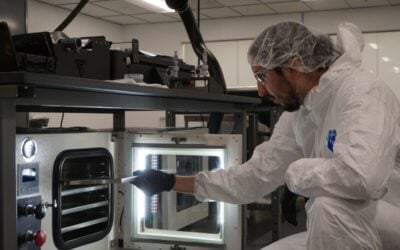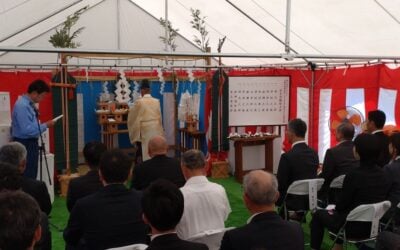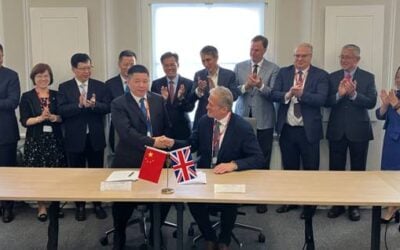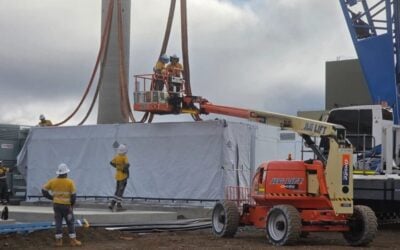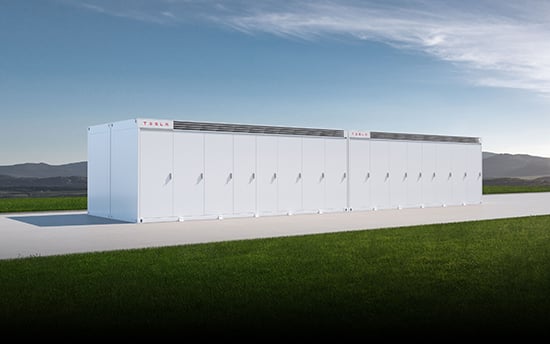
Tesla CEO Elon Musk has said that the company is already achieving “good margins” on the residential Powerwall product, but that “some additional work is needed” for its utility-scale Megapack to do so.
In reporting its first quarter financial results for 2021, the company noted that its energy storage installations stood at 445MWh for the three month period, which was a 70% increase year-on-year versus Q1 2020 (260MWh) but a similar drop again of about 70% from 1.5GWh installed in Q4 2020.
Enjoy 12 months of exclusive analysis
- Regular insight and analysis of the industry’s biggest developments
- In-depth interviews with the industry’s leading figures
- Annual digital subscription to the PV Tech Power journal
- Discounts on Solar Media’s portfolio of events, in-person and virtual
In a presentation prepared for shareholders, Tesla said the year-on-year increase was driven mainly by “the popularity of Powerwall,” with demand far exceeding production rate. Blackout events such as that experienced in Texas for several days in February are driving customers towards buying home energy storage solutions, the company said.
This gap between available supply and high demand is what led Tesla to decide to only make Powerwall available to solar customers — and decided only to make its solar PV system product available in combination with Powerwalls. It may later decide to unbundle the products and sell standalone Powerwalls as production rates increase.
In Q4 2020 reporting, its high total of 1,584MWh of energy storage system (ESS) deployments had conversely been largely attributed to utility-scale systems. In Q3 2020 as well, the company had said that demand for both Megapacks and Powerwalls was outstripping supply, doubling its production volumes of the grid-scale systems in response. This time out, Tesla noted in its investor deck that due to “specific project milestones”, deployments can vary from quarter to quarter. With an increasing number of utility-scale projects using dozens or even a hundred or more megawatts and megawatt-hours of batteries per system, any lull in project development could have a significant knock-on effect; whereas each individual Powerwall 2 product comes with 13.5kWh capacity.
Megapack not as mature a product as Powerwall
In an earnings call with analysts, Pierre Ferragu, an analyst with telecoms and tech researchers New Street Research asked what Tesla’s gross margins “look like” for storage and what its ambitions might be in terms of gross margin for that business.
Musk, who has recently adopted the self-styled title of “Technoking of Tesla” alongside his more formal CEO title, said that Tesla is “aiming for comparable margins in storage as in vehicles”. However, he said, the vehicle business is more mature than energy storage. Tesla is “already at good margins with the Powerwall, but some additional work is needed for the Megapack to achieve good margins,” he said.
Drew Baglino, Tesla’s SVP of powertrain and energy engineering — who appeared on stage with Musk at last year’s much talked about Battery Day — agreed and said that after three years of producing Powerwall 2, good margins have been achieved, “but Megapack has more room to go to achieve our targets”. Musk added to that that Tesla has a “clear runway for improving the cost for the megawatt-hours for the Megapack”. Each Megapack has 1.5MW inverter output and 3MWh capacity and the product was launched in the summer of 2019.
Elsewhere, Musk also said that bundling the Solar Roof — which has had a slow and challenging path from factory to customers’ homes in many cases since its 2016 launch — as well as its regular solar panels with the Powerwall will make home installations “much easier”, due to the power from the PV going directly into the battery system.
The CEO talked up the ability of the Powerwall to give households energy security in the event of utility blackouts, as well as the ability of the ESS to help utilities to stabilise the grid. He said that the way that aggregated home energy systems could “operate as a giant distributed utility” was “profound”. As the popularity of EVs grows, power needs from homes and businesses will go up significantly, and extreme weather events will put further strain on utilities’ ability to supply electricity reliably, which he described as a “recipe for disaster”.
In addition to home storage, Musk said large-scale battery storage at utility level is “important to have”, to help integrate the variable generation from solar and wind. This need can be answered with lithium-ion batteries at current global levels of renewable penetration on grids, and the company believes lithium iron phosphate will form the vast majority of stationary storage capacity, the CEO said. In contrast to shortages of materials like nickel used in different lithium-ion cells of high energy density like nickel manganese cobalt (NMC), which are also widely used for electric transport, “there is no shortage of anything whatsoever in iron phosphate lithium-ion cells, he said.
Meanwhile, where there has been growing discussion of the need for energy storage that can store energy for many hours or even days, weeks or months aka seasonal storage, Musk said that “we have got a long way to go before we are dealing with seasonal technology issues”.
Lars Moravy, Tesla VP of vehicle engineering, also pointed out that seasonal storage systems may only cycle a few times per year — presently, the more a battery on the grid is cycled, the more value it is providing. Lithium-ion batteries cycle hundreds of times per year as they store and shift energy from off-peak to peak times, or perform ancillary services or other functions that have dollar values tied to them. Musk also advocated for renewable energy installations built across a variety of longitudes and latitudes, then connected with high voltage DC lines to be an answer to solving a lot of seasonal energy shortage issues. He said that renewable energy is being deployed already on an economic basis, but argued that carbon tax would be a good incentive to accelerate deployment versus more polluting forms of energy.
“We should tax energy that we think is probably bad and support energy that we think is probably good. Just like cigarettes and alcohol. Just like fruits and vegetables. It’s just common sense,” he said.
Read yesterday’s coverage of the Tesla results on PV Tech for more details on the company’s financial performance, including solar installations for the first quarter of 2021.
Earnings call transcript by Seeking Alpha.

